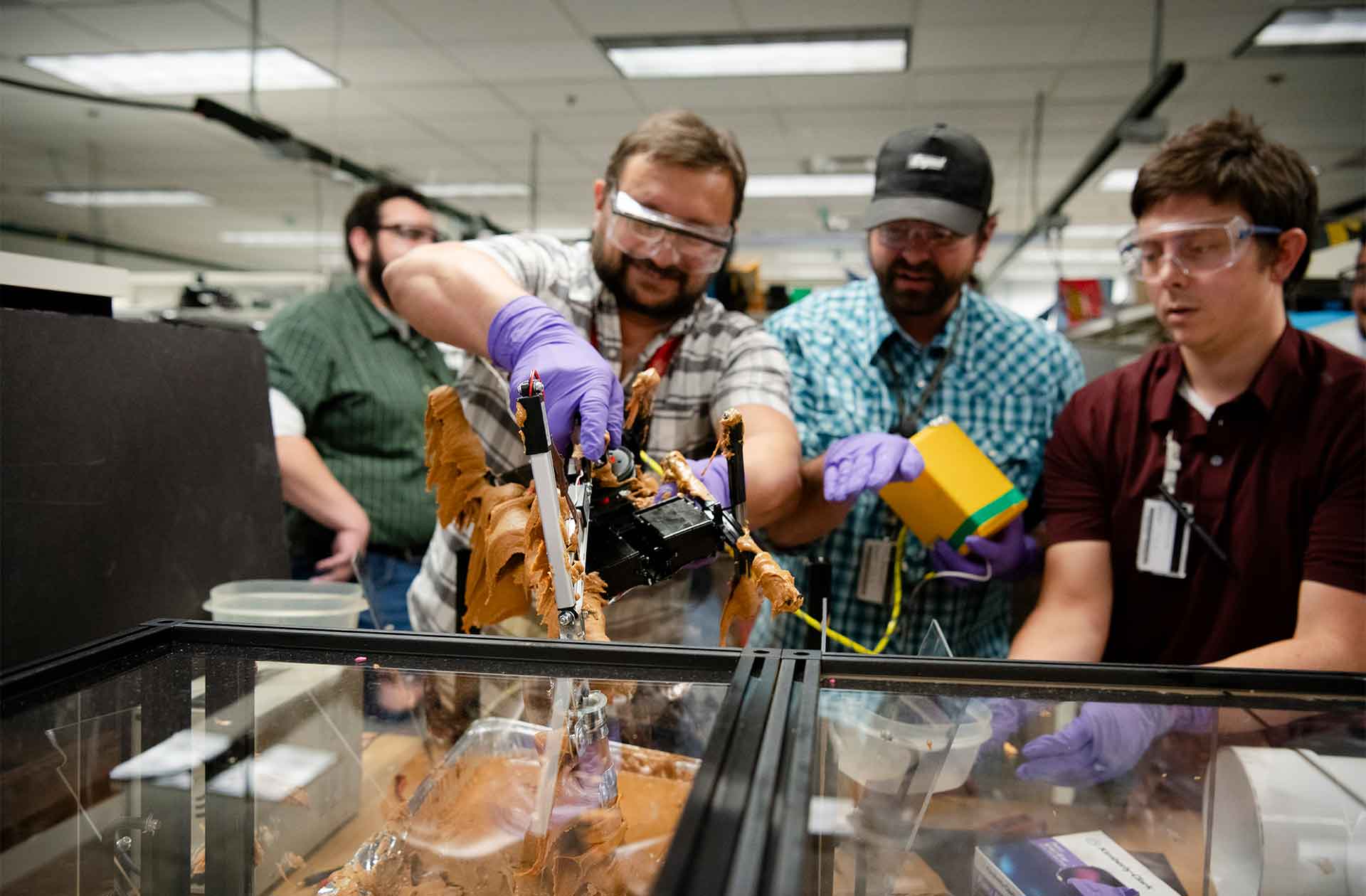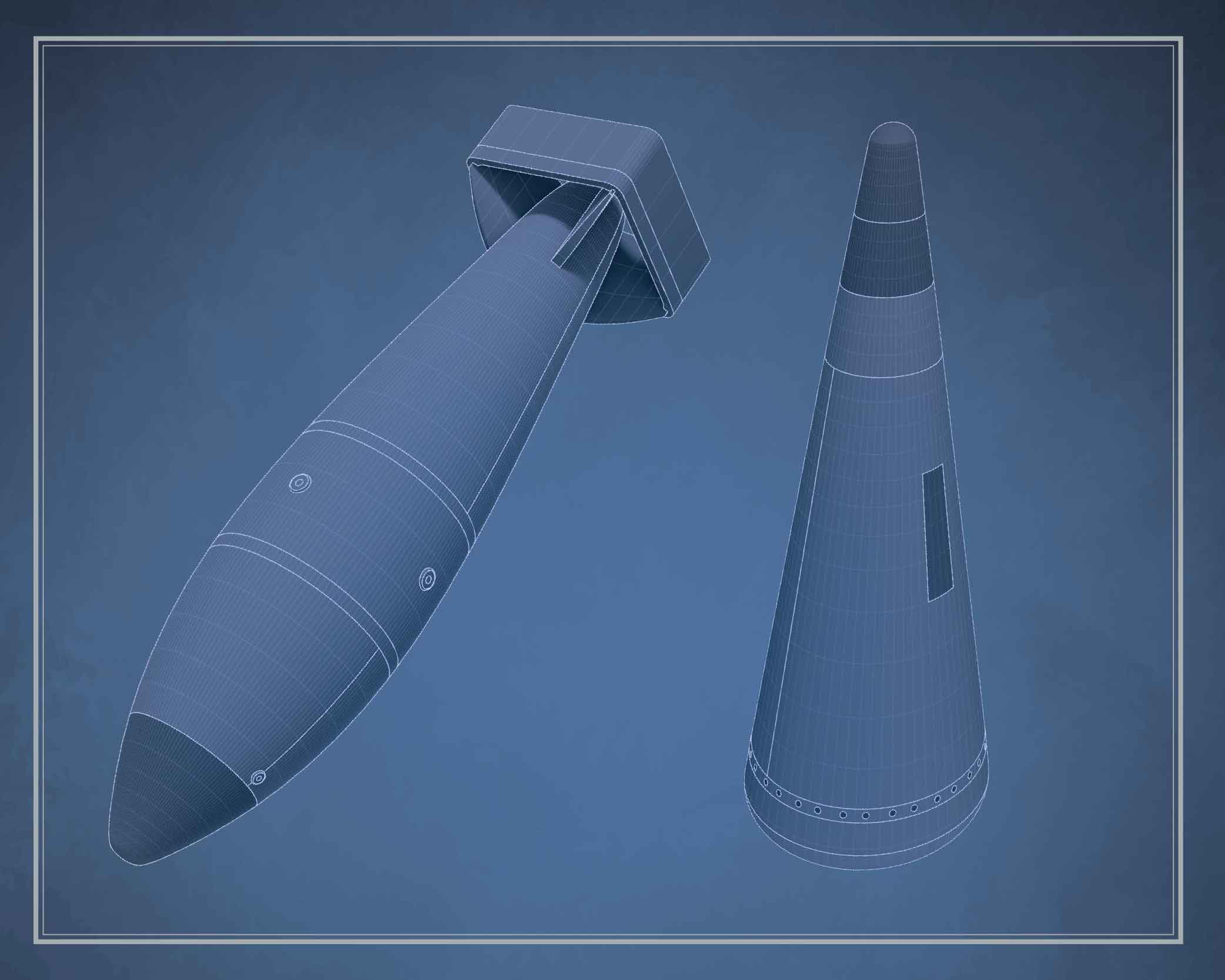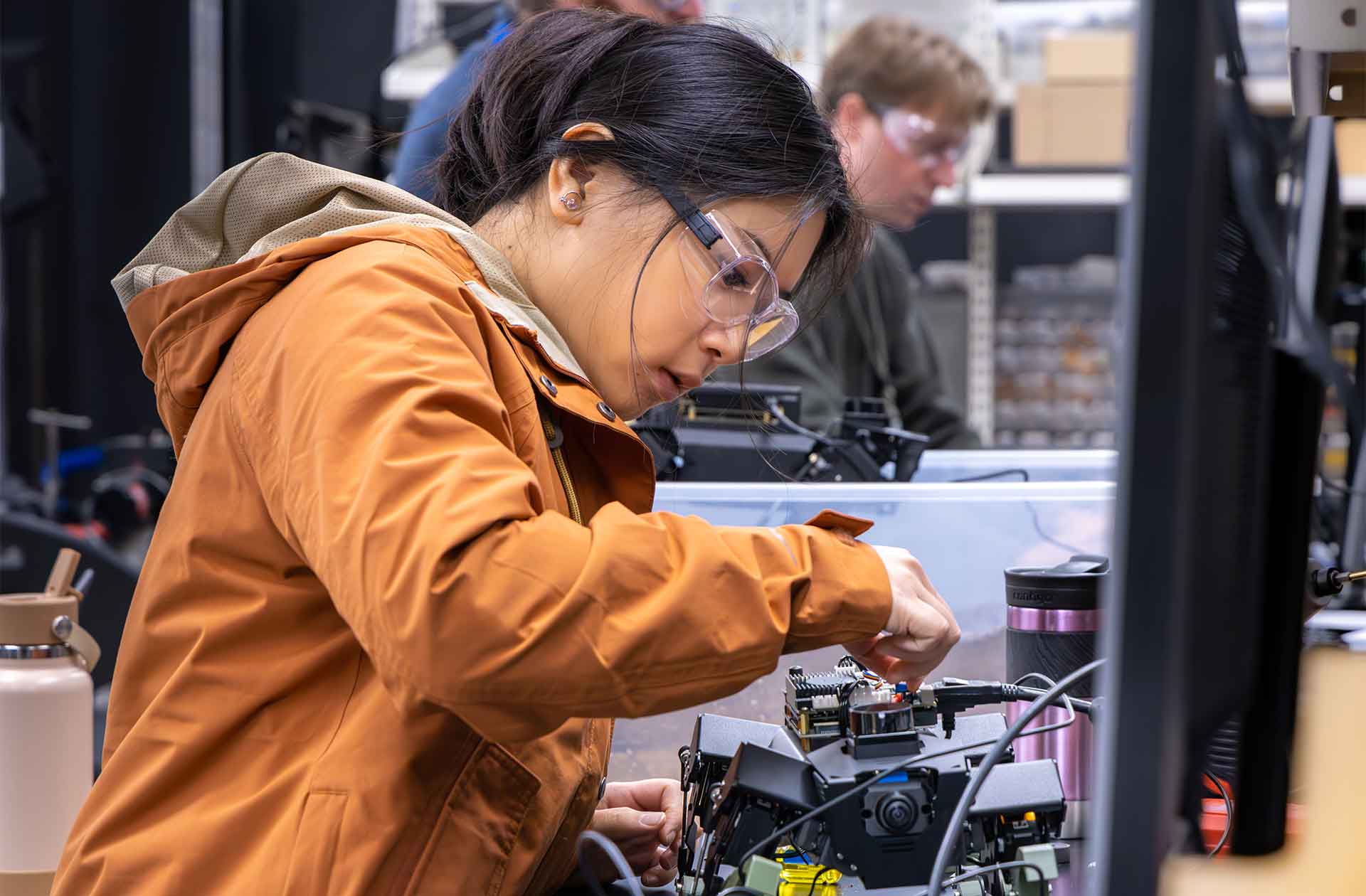Peanut butter, potting soil, and prototype engineering
Los Alamos innovation sprints train engineers to solve critical challenges through hands-on creativity.
- Lindsay Augustyn

Los Alamos National Laboratory scientist Windy Ancipink is kneeling beside a robotic dog, adjusting one of its feet as it claws at a bucket of potting soil. She’s not just playing—she’s training the robot to dig as part of a Lab-wide “innovation sprint” designed to sharpen engineering creativity and problem-solving.
“I’m getting outside of what I normally do and seeing it with fresh eyes,” Ancipink says. “This exercise helps you think in a different way, from a different angle.”
Organized by the Laboratory’s Engineering Leadership Council, these sprints are inspired by innovation workshops used by agile, fast-moving companies. At Los Alamos, the aim is to generate novel solutions to real-world challenges—especially those involving complex, multidisciplinary engineering.
The first sprint, held in 2024, involved designing robots that could trudge through trays of peanut butter—a clever stand-in for radioactive sludge. The second, held in February 2025, tasked teams with modifying robotic quadrupeds to displace soil.
Both scenarios were rooted in one of the Lab’s real-world missions: developing safe and effective methods for excavating radioactive waste from large storage tanks.
Each event brings together five teams of three engineers from across the Laboratory. Participants don’t learn the challenge until day one. From there, they must assess the available tools and materials, then collaborate through trial and error to build a working solution under tight constraints.
“It was a lot of brainstorming,” says engineer Ryan Krieghbaum, whose team won best design in the first sprint. “How do you come up with novel ideas for a problem you didn’t even know about 12 hours ago?”
In the soil sprint, teams programmed their robot dogs to dig, designing custom “paws” from materials like sheet metal, foam, and 3D-printed polymers. The paws mimicked animal digging behaviors—from paddles and snowshoes to dew claws—and helped the robots avoid sinking into the 30-gallon soil bucket.
“We found that an incremental process was most effective,” says team member Chris Mastrangelo. “One happy accident: we realized we could dig using the back paws, too.”
The success of the sprints, participants say, lies in cross-disciplinary collaboration. “Just getting engineers with different experiences talking to each other sparks innovation,” says engineer John Smith.
Despite the mess—peanut butter in test vehicles and soil in cooling fans—the impact is clear. These exercises hone not just technical skills, but the quick thinking and adaptability essential to mission success.
“The sprint is perfect for people who really enjoy problem solving and collaboration, as that’s really what engineering is,” says research and development engineer Morgan Solay. “I would recommend the sprint to anyone, especially if they’re feeling burnt out or if they’re feeling like they’re not getting that ‘engineering itch’ scratched.” ★








